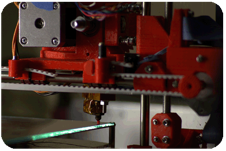 As a metal products manufacturer for more than 125 years, Alcoa is constantly searching for new ways to improve its efficiency. After all, the New York-based industrial company makes enormous products that can sometimes take years to finish. For instance, Alcoa’s most in-demand items are gas turbines, or the gigantic engines that power planes for Boeing and Airbus. Able to withstand temperatures up to 2,000 degrees Fahrenheit, the turbines must be developed and tested for more than a year before they’re ready to be installed.
As a metal products manufacturer for more than 125 years, Alcoa is constantly searching for new ways to improve its efficiency. After all, the New York-based industrial company makes enormous products that can sometimes take years to finish. For instance, Alcoa’s most in-demand items are gas turbines, or the gigantic engines that power planes for Boeing and Airbus. Able to withstand temperatures up to 2,000 degrees Fahrenheit, the turbines must be developed and tested for more than a year before they’re ready to be installed.
Then again, that was before Alcoa brought additive manufacturing, better known as 3D printing, into the mix. In the past, the company relied on a process called “subtractive machining” to create the die casts it needed to make gas turbines. This entailed starting with a big block of steel and then whittling it down into the shape of a turbine cast. Sculpting one of these dies takes anywhere from ten to 30 weeks to finish, time that Alcoa didn’t want to keep losing. Instead, the company turned to 3D printing software to construct the objects on a computer one layer at a time. This process cuts down the production time of making a cast from half a year to less than eight weeks.
Not only does 3D printing save Alcoa time, the company also cut nearly 25 percent of costs from its turbine casting process as well. Alcoa has been experimenting with 3D printing since the late 1990s, even though the practice has only recently come into fashion at many companies. Indeed, while Alcoa’s turbine casts represent its first major use of additive manufacturing, execs insist that it’s far from the company’s last. “We’re really at the beginning of what I would call a second Industrial Revolution,” said Alcoa CEO Klaus Kleinfeld. “You go from idea to product in no time. It’s almost like production at your fingertips.”
Questions:
- Is 3D printing really the beginning of a second industrial revolution?
- Will 3D printing be a major boost for small manufacturers?
Source: Ben Geier, “Using 3-D Printing to Make Jet Engines,” Fortune, November 13, 2014. Photo by: Dennis van Zuijlekom.
